What can the Sleeping Hermaphroditus teach us about love?
Kevin Childs examines the myth of Hermaphroditus, what it says about humankind and how it has influenced art through the ages

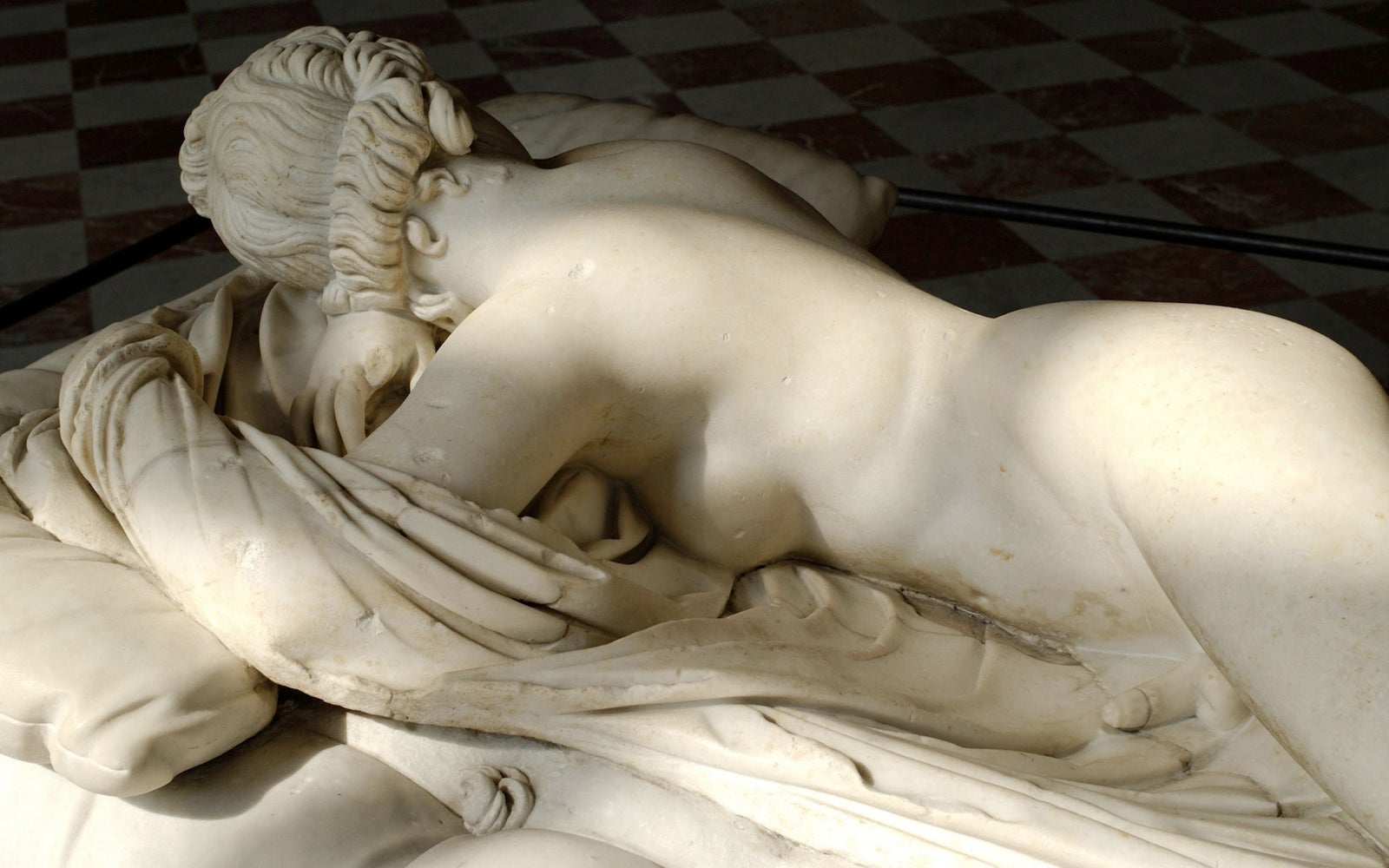
There’s an old legend about the origins of love. Long ago, so it goes, humans came in three types. All had four legs, four arms, two sets of genitalia and two faces. They were a little bit like beach balls and rolled about on their hands and feet. Some were made up of two males, some two females and a third type were androgynous, both male and female. But they became uppity as a species, overly confident in their physical unions, and the gods decided to punish them. So each one was split in half and left to walk about upright on two legs.
You know the story’s true because the navel is where each half was sewn up again and a knot was left.
Thereafter, the two halves constantly wandered about looking for their “twin”, their soul mate, their true love. Love was therefore born from that everlasting search for completeness. Those who’d been two males became gay men, those who’d been two females lesbians, and those who’d been both male and female, one can only assume became straight.
And a few of those divided halves ended up with aspects or features of both genders.
As I said, it’s an old story, told by the playwright Aristophanes in Plato’s dialogue The Symposium, that repository of love-lore which, amongst other things, gave us the notion of platonic love. When Tom Cruise tells Renée Zellweger in Jerry Maguire “you complete me”, he alludes to it. Leonard Bernstein composed a serenade for strings inspired by it. In John Cameron Mitchell’s Hedwig and the Angry Inch the main protagonist writes a song about it.
The idea of a soulmate is eternally fresh. Even in a world without gods it lives on, it has currency. But what strikes me about this story is the notion of the third “sex”. Almost every culture has some understanding of this: the “two-spirit people” of North America, the hijra of South Asia, the fa’afafine of Polynesia. They are the other, the androgyne, the hermaphrodite, non-binary and gender fluid, combining aspects of both sexes, both genders, in a single body, celebrated or reviled, but ever-present, it would seem, in the history of humanity. Perhaps like Plato’s soulmates they define, somehow, that humanity.
While Plato’s followers were expanding his ideas two centuries later, an artist was creating a sculpture that depicted a similarly ancient myth. Hermaphroditus was the son of Hermes, the Greek messenger god and god of commerce, and the goddess of love, Aphrodite. Both his parents, it was said, were clearly visible in his beautiful face. Salmacis, a local water nymph, fell in love with him. But he was having none of her. While he was bathing in her pool, luxuriating in the cool water, she dived in, clinging about him like a second skin, or as the Roman poet Ovid imagined it:
As Hermaphroditus strives to slip away. Like a snake,
Lifted by an eagle up, up into the air. Hanging there,
She winds and twines around his head and feet
Coil on coil entangle his spreading wings.
– Ovid, Metamorphoses, Book IV,
Salmacis prayed to the gods to let her keep him with her forever. They responded by fusing the body of girl and boy together into a single entity with the characteristics of both sexes. The newly reborn deity then begs their parents to curse the pool with vitality draining powers.
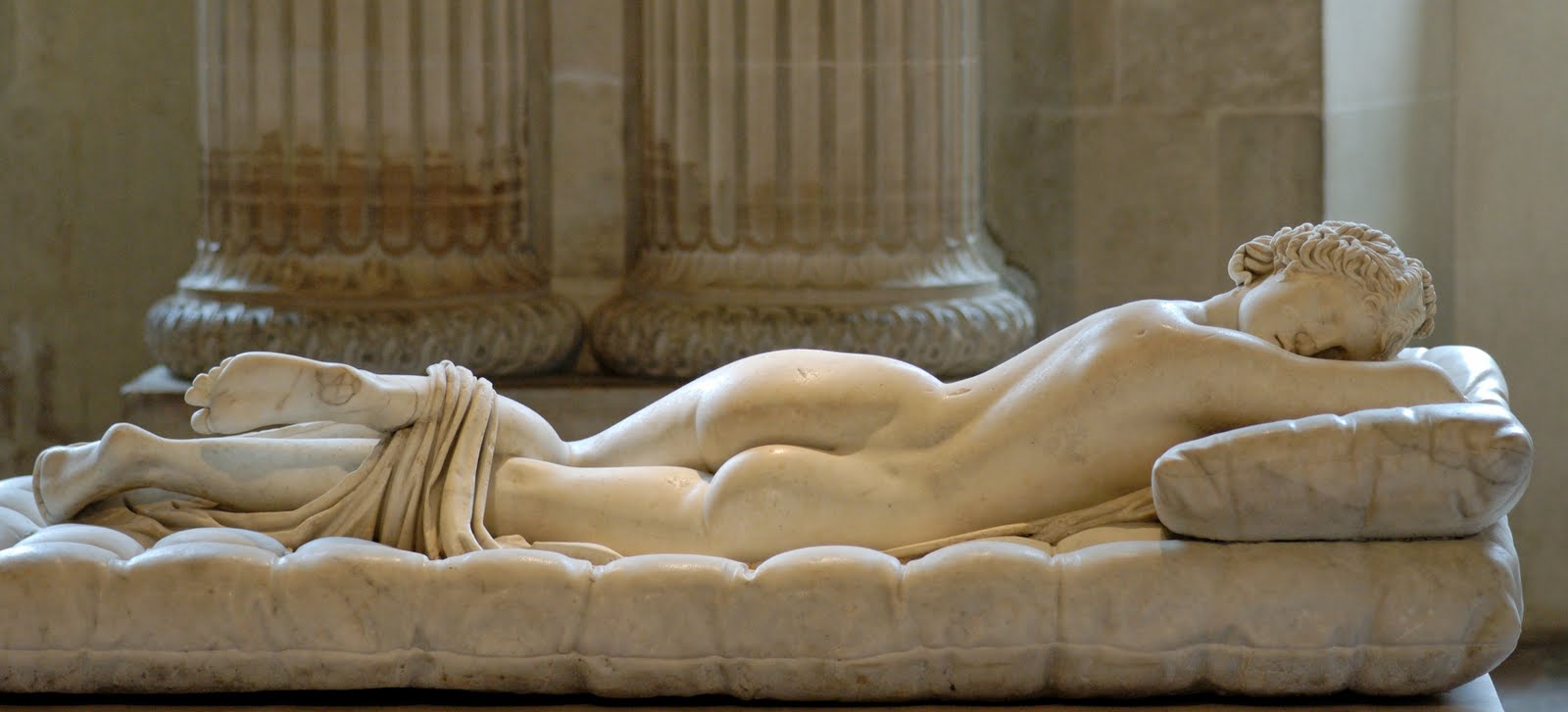
But an earlier Greek text, discovered in 1995 near the site of the Pool of Salmacis, a little way out of the modern Turkish town of Bodrum, gives a very different spin on the relationship. It’s Salmacis who nurtures the dual nature of the god, tempering the violence of the male with the sweetness of her waters, rubbing off the brute scuff, so to speak, to create a more perfect human being. Significantly, as a deity, Hermaphroditus became associated with ideal love and the marriage of male and female – a beautiful monster, as someone once called them – so cult statues of them were put up in temples and sacred groves: predominantly showing a female figure with breasts and a penis; although more “male” variants exist as one ancient author noted:
He has a physical body that is a combination of man and woman, in that he has a body which is beautiful and delicate like that of a woman but has the masculine quality and vigour of a man. – Diodorus Siculus, Bibliotheca historica
We don’t know who made the original statue of the famous Sleeping Hermaphroditus. It’s likely to have been cast in bronze, as most ancient Greek originals were, and has been credited to a little-known sculptor of the mid-second century BC called Polycles. He might as well be anonymous now but the creator of a thing of such sensuous beauty, such vivid inspiration, such pleasure should be better known. In his imagination Hermaphroditus lies sleeping on their belly, resting perhaps after the violent struggle of their rebirth. A sheet is stretched out on the ground beneath them in such a way that the viewer, like a hunter in the forest, stumbles across the back view with its softly swelling buttocks, which from a certain angle could be female and from another male. Their foot stretches out, entangled in the crisp folds of the sheet, their head rests on the right forearm, the whole creating a sort of lazily dynamic twist – known as contrapposto – even in repose.
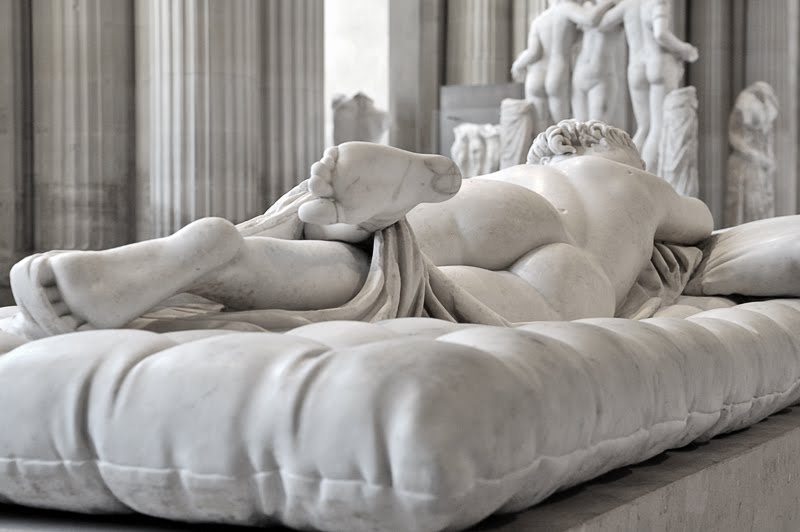
On moving around the figure, stealthily like one who wouldn’t yet disturb the sleeping god, the viewer experiences a series of relationships with the object, a fluidity of moment and ever-changing viewpoint that culminates in the glimpse of full breasts and a semi-erect penis, the coup de grâce, the surprise, the money shot. The discovery is like – to paraphrase a 19th-century admirer – the delicious recoil from icy water on a hot summer’s day. Or as another earlier lover of this artwork, the Renaissance sculptor Lorenzo Ghiberti, wrote:
Words cannot express the perfection of this statue… there were so many delicacies, which seeing could not see without the hand discovering them by touch. – Lorenzo Ghiberti, Third Commentary
Stand back Apollo Belvedere, take a seat Venus de Milo, nymphs and satyrs run away, this is the real star of antiquity, the very height of perfection – or should be. Ghiberti saw the first of what would be a number of Roman-era copies of the sculpture to emerge from the ground over the next 400 years. The most famous, and most complete, of these was dug out of the building site of Santa Maria della Vittoria in Rome in around 1609 and acquired by that ever-greedy collector of all things strange and beautiful, Cardinal Scipione Borghese, who wanted it to decorate his new villa on the outskirts of the city. It’s an exquisite piece of marble carving, smooth, delicate, tactile, everything Ghiberti admired in the version he saw, and perhaps the most voluptuous thing ever to come from the rich earth of Italy. Although it’s a shame we can never know what the original bronze might have looked like, with its dark patina, gilding and areas of polished sheen, we hardly miss it in the presence of this masterpiece.
Hermaphroditus has slept for over 2,000 years, ignoring the many crowds who’ve come to gaze and whisper about them
Not content with his sleeping god lying on the ground, 400 years ago Borghese had the great Baroque sculptor Gian Lorenzo Bernini create a spectacular buttoned mattress for them out of marble, the plump springiness of which seems to follow the contours of the body like it would give to the touch. Visitors to the villa would come across the god in a room specially designed for them. Hermaphroditus lies in comfort now in the Louvre after they were sold 200 years later to Napoleon by one of the cardinal’s descendants.
Hermaphroditus’s duality is itself an aphrodisiac, an objectification of desire, that difficult-to-pin-down feeling of longing, in an object that is properly so. It’s the union of opposites, the ambiguity of which one 18th-century commentator found “delicious”. Such forms, he goes on:
…resemble the surface of the sea, which, seen from a distance, seems quiet and smooth as a mirror, although in fact it is always in movement and incessantly rolls its waves… – Johann Joachim Winckelmann, History of the Art of Antiquity
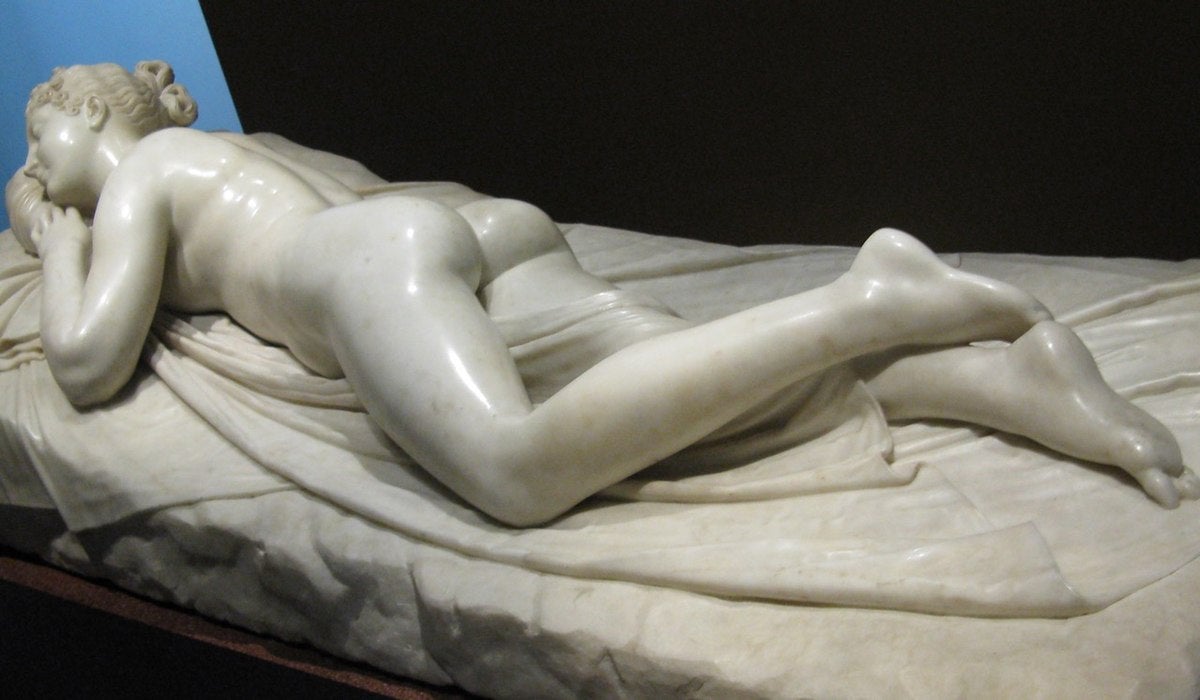
And because it’s made of smooth tactile marble, it begs to be touched only to discover that what should be warm and soft is cool and hard. There was and is something utterly compelling between the idea of sexuality and its manifestation in bronze or marble. Can that compulsion be linked to pornography, though? Improbable stories were told by the terribly learned and terribly serious ancient polymath Pliny the Elder of amorous men ejaculating over particularly beautiful sculptures, stories which Mary Beard has likened to rape. It’s too big a discussion for here – although it needs to be had – but isn’t that disconnect between what is seen and what is touched, the hiatus between realism and reality, critical? Sculptures and paintings are imaginative objects, that is, they require an imaginative response from us, the viewer, to have life, to believe there is blood coursing through those marble veins. Our relationship with them can only be momentary, fragmentary, before we acknowledge they are made of lifeless stone. We might as well make love to a rock. But sometimes it’s such moments that make life worth living.
It was so in antiquity and remains in the modern age.
Sexual ambiguity sold stories as well as sculptures. Even the young Hercules made a passable woman. The Greek hero Achilles is dressed convincingly as a girl by his mother to keep him from the Trojan War recruitment drive. That sweet image inspired a vase painter in the fifth century to depict the hero, fresh-faced, long of eyelash, tenderly binding up a wound on his lover Patroclus’s arm. The erotic potential of the scene underlined by both men’s sexual organs visible under their short tunics.
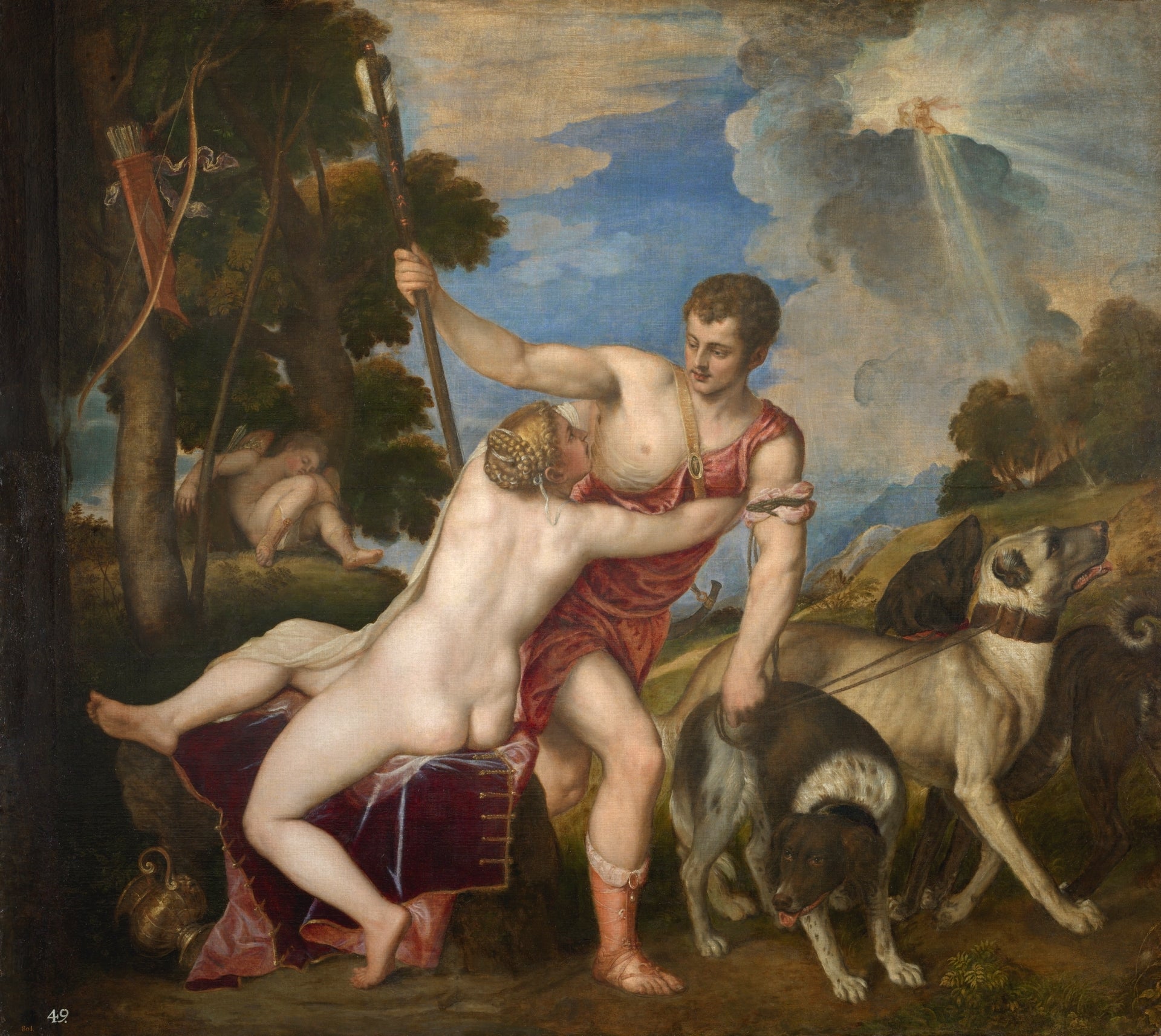
In poetry and drama girls dress as boys and boys dress as girls for sport and plot lines, and other boys and girls fall in love with them whichever way. But the vein of gold goes deeper than that. There’s a kind of ideal beauty discussed at the time the Sleeping Hermaphroditus re-emerged from the ground, arguably the ultimate ideal beauty, that mingles male and female in a single person, producing heroes with coral lips, lily and rose complexions and a tumble of golden locks. Heroines have firm bodies, swing a sword with the best of them and pursue the hero with as much vim and gusto as any determined Don Juan. So often are those roles reversed in early modern stories, the definitions of masculine and feminine, supposedly so long cherished, begin to melt.
As it is in poetry, so it is in art. Once you have seen it, you will begin to recognise the subtle influence of the Sleeping Hermaphroditus in so many places, so many painted and sculpted androgynous heroes and heroines, so many naked bodies. For example, Titian’s Venus and Adonis plays with gender roles as well as rear views, Velázquez’s Rokeby Venus in the National Gallery, London is an obvious quotation, as is the Neoclassical sculptor Antonio Canova’s Sleeping Nymph in the Victoria and Albert Museum. Picasso’s various erotic reveries of his mistress Marie-Thérèse Walter sleeping are haunted by it, as indeed is Roy Lichtenstein’s Benday-dot Sleeping Woman and actress Tilda Swinton’s sleeping in a glass box in a London gallery. But quotations don’t need to be sleeping or even lying down.
Almost every rear view seems to have something of the Hermaphroditus about it. Jacques-Louis David’s heroic male nude, the naked Romulus in the Sabine Women of 1799 exudes an androgynous quality, a pretty face reminiscent of that ancient vase painting of Achilles, and a peachy pair of buttocks. Yet significantly Romulus’s pose, with outstretched arms, is mirrored by the intervention of his wife in the battle scene as if the two would fuse together to form one being again.
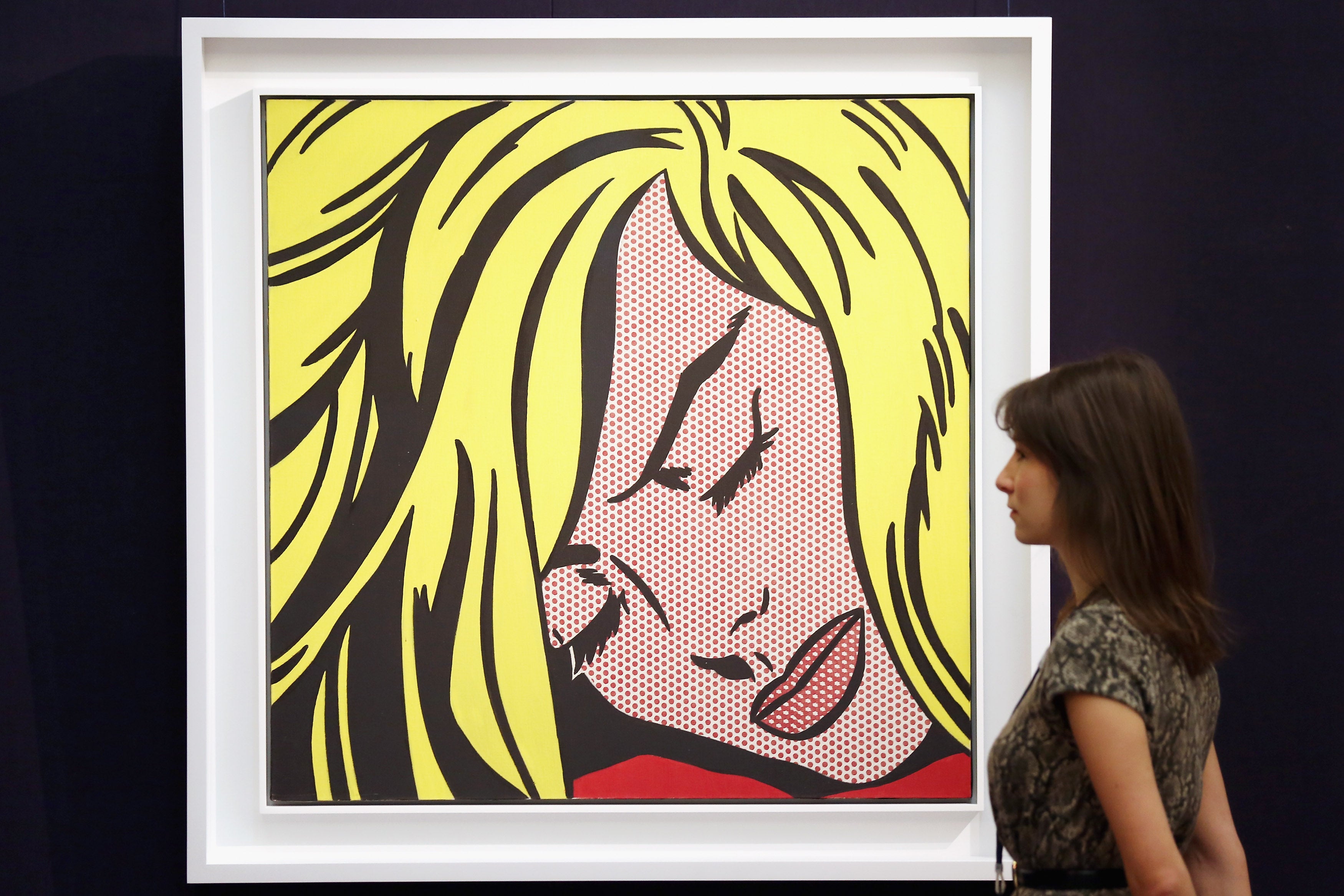
David set up his vast canvas in the National Palace of Arts and Science and charged the public for entry, making a fair profit on what was both the commodification of his art and his status. The artist who made the Sleeping Hermaphroditus was essentially in a similar game, producing an image which had no cultic purpose but a great deal of aesthetic and erotic value for a collector of lovely things. Living in a time when Greek culture was rapidly spreading across the Mediterranean world, the sculptor’s work represents a shift in our understanding of art from a religious context to one of connoisseurly and monetary worth. It’s likely it was made for some pleasure palace or garden in which the owner would allow the sleeping figure to be discovered by his or her guests as if by accident. That it could also be reproduced, and given the number of surviving versions it’s likely hundreds of copies were made, only added to its commercialisation. In the hands of a sculptor such as the creator of the Borghese version, it could be worth a great deal. Two thousand years later it still was.
With love like gold bound round about the head,
Sex to sweet sex with lips and limbs is wed,
Turning the fruitful feud of hers and his
To the waste wedlock of a sterile kiss….
– Algernon Swinburne, Hermaphroditus,
Of course, Hermaphroditus hasn’t always been appreciated. In ancient times notions of gender fluidity were taken seriously. By the middle of the 19th century they were a figure of sniggering fun, or something too appalling to contemplate. The erotic potential had become “sterile” priapism, the famous sculpture a symbol of decadence and moral degradation. One critic described Hermaphroditus as “a perverse journey back to the primordial earth”.
In fact, there’s a variant of the sleeping god in the collections of the Liverpool Museums which sums up this tragic decline. The figure lies on their back, head thrown to one side and resting on their shoulder. It’s another, less subtle tease, I suppose… or was. Not long after it changed hands in the early 19th century, the sculpture was mutilated having the penis removed and the area between the legs smoothed out. It was renamed Reclining Venus. Some folks in ancient times considered non-binary people bad omens, most others thought them divine. Too many in more recent times want to change them or, more sinisterly, erase their existence.
They are neither man nor woman. They espouse no creed and speak no politics. They do not love, they do not hate
Amid all this negativity, the English poet Algernon Swinburne felt moved to defend the Sleeping Hermaphroditus against a great wave of Victorian public disapproval: “There is nothing lovelier, as there is nothing more famous, in latter Hellenic art than the statue of Hermaphroditus… At Paris, at Florence, at Naples, the delicate divinity of this work has always drawn towards it the eyes of artists and poets.”
And so it does still. In a critical scene in Mitchell’s Hedwig and the Angry Inch, the main character, then a boy called Hansel, is sunbathing naked on a pile of rubble in East Berlin when the American GI who will change his life comes across him, thinking at first he’s a girl. Hansel is lying on his stomach and in a moment that seems inspired by the Sleeping Hermaphroditus, he rolls over. But the answer to their love affair and a new life in the United States is for Hansel to undergo botched gender reassignment surgery and become Hedwig so the GI can marry her. They cannot stay they; he must become her. Just as in Neil Jordan’s film The Crying Game, which has its own altogether more dramatic reveal moment, Jaye Davidson’s character must become a boy to save their life.
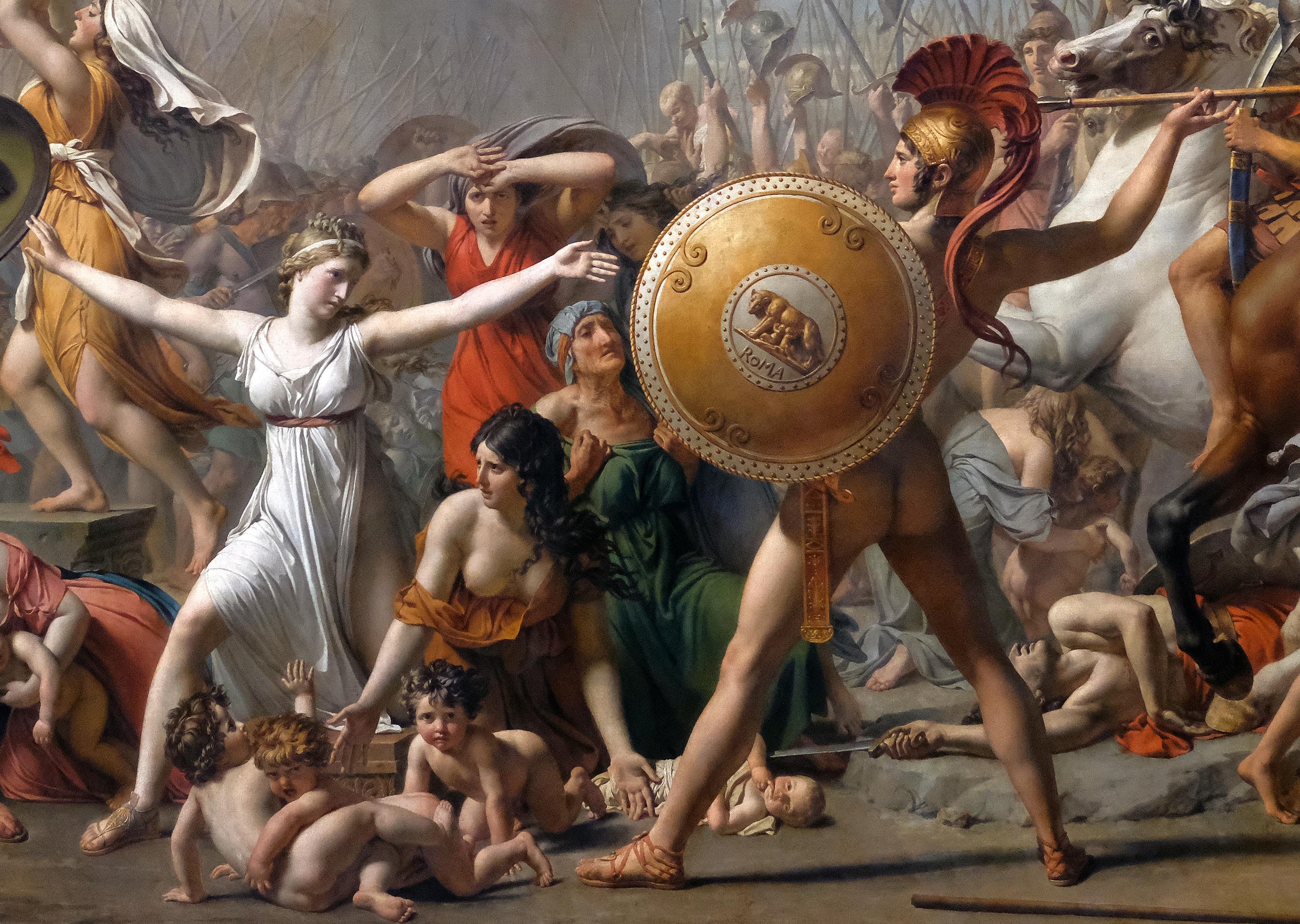
It’s said that the artist Michelangelo, when he was still in his teens, was asked by a young Medici lordling to make a sculpture out of a heavy snowfall one January morning in Florence. It was only half a joke, and we don’t know what the statue represented and, of course, it couldn’t survive. But that it was perfection in its own way seems likely. It must have been the ultimate fleeting moment of beauty as the crisp snow soon melted and sank back into the earth, and like Plato’s origin of love it exists only in a sort of half-remembered yearning. Recently, the American artist Barry X Ball has made copies of the Louvre Sleeping Hermaphroditus through a process of detailed photography, electronic scans, machine milling and hand finishing. The materials are black marble, golden calcite and rose onyx. The body gleams and shines, so alarmingly the hard stone appears to be melting into the mattress – it’s an acknowledgment of the sculpture’s own fluidity and our metamorphic relationship with it, another contradiction in this long life of contradictions.
Hermaphroditus has slept for over 2,000 years, ignoring the many crowds who’ve come to gaze and whisper about them. They dream between each moonshine whatever dream arouses them, oblivious to the pleasure, the wonder, the obsession and, yes, the fear they provoke in others. They are neither man nor woman. They espouse no creed and speak no politics. They do not love, they do not hate. They don’t search for completeness in another. They are neither human nor wholly object. They don’t eat, they don’t sleep, they don’t wake. They write no poetry and make no wars. They exist, but they don’t live. They are an idea, a form of perfection, an intake of breath held for millennia. A river of desire. They seem. They wait.




Join our commenting forum
Join thought-provoking conversations, follow other Independent readers and see their replies
Comments